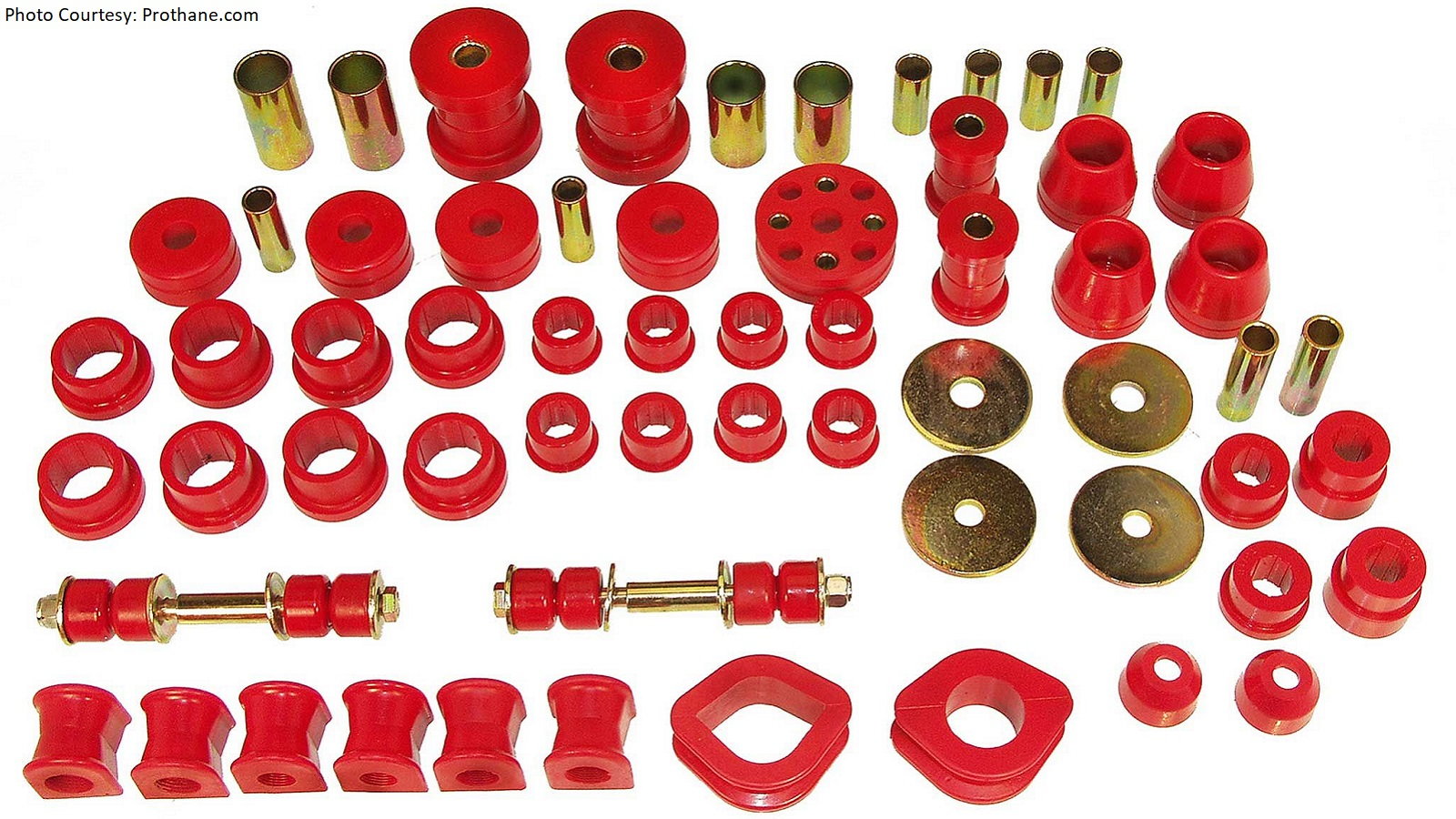When to Replace Your Suspension Bushings (and What to Look For!)
Don't start swapping out suspension parts until you have a look at those old bushings. Check out what to look out for inside!










1. Those Important Little Rubber Bits
Suspension bushings aren't exactly as glamorous as things like control arms and coilovers. But that doesn't make them any less important. And once your OEM bushings are worn out, you'll typically know it. Ride quality goes south and handling gets sloppy. And the more you drive on them, the worse it's going to get. Exposure to the elements and petroleum-based products, along with road debris, time and use, and your local climate all contribute to their downfall. But aside from the obvious, how can you tell if it's time to replace your bushings? Well, that's easy - just take a look at them!
>>Join the conversation about Replacing the Suspension Bushings right here in S2Ki.com.
2. Spotting Bad Bushings
Ideally, you'll want to periodically give your bushings a visual to see what they look like. So grab a flashlight and look for slop, deterioration, and cracks. If you see any of these tell-tale signs, it's probably time to ditch your old bushings. The good news is, replacement bushings aren't terribly expensive. But they aren't all made the same, either.
>>Join the conversation about Replacing the Suspension Bushings right here in S2Ki.com.
3. Material Considerations
Sure, you can simply order up an OEM replacement set of suspension bushings, slap them on, and call it a day. But if you're going to all that trouble, why not upgrade to something that'll also improve your handling and last longer? All of those qualities, along with a firmer and more stable ride, can be had by making the switch to urethane bushings. As a bonus, doing so will also help compensate for power increases. Rubber bushings simply aren't made to hold up to additional torque and handling stress, but urethane ones are.
>>Join the conversation about Replacing the Suspension Bushings right here in S2Ki.com.
4. Other Considerations
Stiffer bushings will make a noticeable difference in your car's response to cornering, acceleration, and braking. But obviously, you don't want to go too stiff for street use. Solid spherical joints might be cool in race cars, but you'll quickly get tired of the harsh ride and excessive noise on public roads. Urethane is a nice compromise for street cars as they're much stiffer than rubber, but not so stiff that they'll rattle your teeth out over uneven surfaces. And they're available in various colors, in case somebody wants to scope out your undersides!
>>Join the conversation about Replacing the Suspension Bushings right here in S2Ki.com.
5. Urethane Superiority
Another great thing about urethane is that it's impervious to stuff like oil, gas, and grease. You know, the same stuff that causes rubber to break down and wear out over time. This obviously helps your bushings last a lot longer, so you'll save money in the long run. Plus, rubber bushings are designed to be soft and a little bit spongy for ride quality. Urethane bushings are instead designed to provide a stiffer, more controlled response to input. Make the swap, and you'll never regret it!
>>Join the conversation about Replacing the Suspension Bushings right here in S2Ki.com.
